By Sara Goodnick
To improve your action photography skills a day or two spent photographing the fast-growing sport of Cowboy Mounted Shooting is just the ticket.
Cowboys and cowgirls compete on galloping horses, shooting single-action 19th century style revolvers, with theatrical black powder ammunition blanks at balloons. They compete one at a time, racing through one of 82 pre-determined patterns of 10 balloons on sticks, with the goal of having the cleanest round and the fastest time.
It’s dramatic, but fun and completely family-friendly. The noise is loud, but one can get used to it, or just wear ear protection. The participants and their horses definitely wear ear protection.
They often dress in traditional western gear, both modern and historical, so when you get tired of the action, go for the interesting details.
Because they run the same pattern, you can stay in the same spot and get some consistency in your photographs as you improve your skills.
I have had horses for most of my life, so I know how to behave when around them. For those of you new to the horse world, if you go, just remember, be polite and friendly, stay out of the way of the riders, do not go into the arena, do not feed or pet the horses without permission, do not move quickly when you are behind a horse, smile and chat with the other photographers, and stay out of the way of the official paid photographer.
The photography skills I was working on during the two days I photographed the Phoenix Winter Championships recently:
- Using my Nikkor 80-400mm f/4.5-5.6 lens at 400mm and getting the fast moving subjects in focus. The depth of field for this lens on my Nikon D810 at 50 feet is a short 1 foot 6 inches, according to my app, DOF Scale, so it was a real challenge. I had to guess how far they were, but it varied by as much as 50 feet at least.
- Capturing and freezing the action as they fired the pistols. Getting the smoke was good, but the real test was in getting the flames before the smoke.
- Finding good light both inside the covered arena and outside.
- Finding a spot without a distracting background.
- Testing the limits of the camera’s ISO range.
- Learning to use focus tracking.
Here is what I learned:
- It takes a lot of practice and concentration to follow a moving subject and keep it in focus.
- You must trigger the shutter before you see the flash of the flames from the pistol. If you see the flames through the viewfinder, it is too late. You have to anticipate. Watching some of the runs without trying to photograph them will help.
- Shutter speed must be 1/1000 sec. or faster. Shoot on manual and adjust aperture and ISO accordingly. Or you could use shutter priority.
- Try another lens, such as the 70-200 f/2.8. I had very nice images from this lens when I could get close enough.
- Shooting a high speed burst doesn’t always catch what you want if your timing is already off.
- Shooting a high speed burst over and over again can cause buffering problems as the camera just stops shooting and tries to catch up. I had a 120Mbs CF card but between the card and the camera, I just don’t have a top of the line sports dedicated camera. But what I have is good enough for my purposes.
Here are some of my favorites, and several with some things to watch out for.
First, the bad:
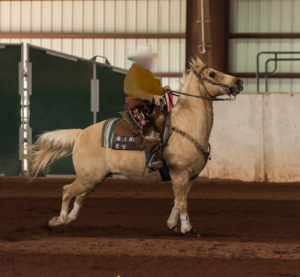
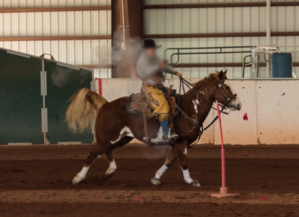
The horse’s feet are in an awkward part of the stride. This happens a lot in this type of event and there is little to be done. With practice, you can catch some better foot placement, but trying to also catch the shooting at the right time is just luck.

I really try to avoid photographing a horse with its mouth gaping open. This is a very busy background and the balloon is in front of the horse. Legs are awkward.
Some of my favorites:
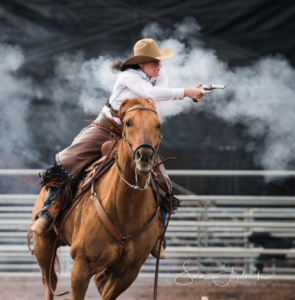
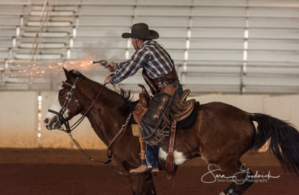


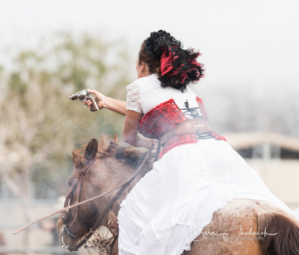
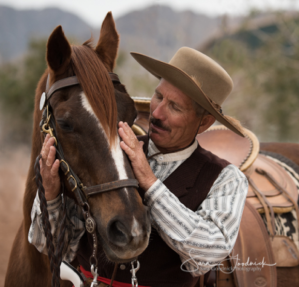
Sara Goodnick is a Volunteer Photo Guide with Arizona Highways PhotoScapes.
